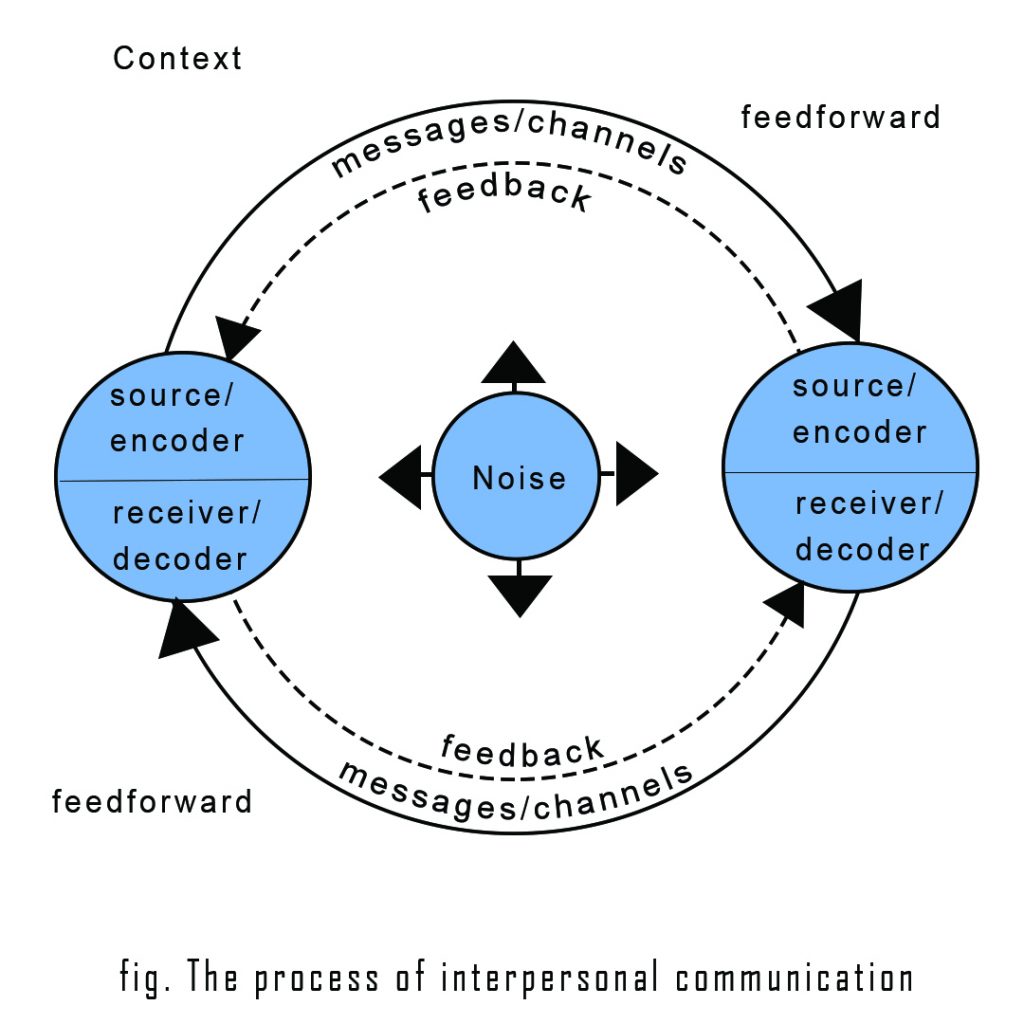Interpersonal communication is the process of exchange of information, ideas, feelings and meaning between two or more people through verbal and/or non-verbal methods.
It often includes face-to-face exchange of messages, which may take form of a certain tone of voice, facial expressions, body language and gestures. The level of one’s interpersonal communication skills is measured through the effectiveness of meaning transferred through the message.
Commonly used interpersonal communication within a business organization include water cooler talks, client meetings, employee performance reviews and project discussions. But, of course, online conversation is a large part of people’s interpersonal experience today.
Core concepts
Communication is taking place when two or more people dwelling in the same place are aware of each other’s presence. The communication may be subtle or unintentional and doesn’t necessarily needs to be verbal.
Although no communication may be intended, non-verbal methods such as posture and facial expression relay messages from one person to another. Interpersonal communication is largely dyadic in nature (occurring between two people) but is often extended to a small group such as family.

Interpersonal communication involves interdependent people
Interpersonal communication is the communication where two or more people are connected in some way. It would include the exchange between a teacher and their students, a married couple, a boss and an intern and so on.
The people involved in the communication are interdependent, meaning the action of one person has effects on the other person. Example: A child’s temper tantrum will affect his parents and siblings.
Interpersonal communication essentially defines a relationship
Interpersonal communication is relational in nature; it takes place in a relationship and the way we communicate depends on the kind of relationship we have with the other person. Example: You wouldn’t call your boss by their nickname, but you would for a sibling or a friend.
The kind of communication can range from relatively impersonal to highly personal. Example: You wouldn’t gossip about your ex with your boss, but would with a friend.
Elements of interpersonal communication
Source-Receiver
Source refers to the party that formulates and sends messages while receiver receives and understands messages. The term source-receiver emphasizes the dual role of a person as a source and receiver.
Messages
For interpersonal communication to exist, messages must be sent and received. In face-to-face communication, verbal and non-verbal messages are exchanged through speech, facial expressions, body movements and gestures. In online communication, messages are communicated with words, emoticons, photos, videos and audios.
Feedback
Feedback conveys information about the messages sent. In face-to-face communication, nods of agreement, smiles, puzzled looks, confusion etc are feedback and can be monitored as we are speaking. In online communication, feedback is delayed.
Channel
Channel refers to the medium between source and receiver through which messages pass. Messages are transferred through multiple channels. For example, in face-to-face communication, messages are conveyed through voice as well as gestures.
Noise
Noise refers to any interference faced while receiving a message. It can be physical, physiological, psychological or semantic. Noise cannot be eliminated completely but it can be reduced.
Context
Every communication takes place within a context. Context refers to an environment that influences the forms and content of communication.
Types of interpersonal communication
In a broad sense, interpersonal communication is categorized into two types.
Verbal communication
Verbal communication includes the exchange done with spoken words. This includes what we say and how.
According to Albert Mehrabian, words (what we say) make up only 7% of our communication while our tone of voice, pauses, rhythm etc (how we say) make up 38% of our communication. The latter is also known as para-verbal communication.
Non-verbal communication
Non-verbal communication, on the other hand, constitutes 55% of our interpersonal communication. Our action speaks volume and is a key aspect in communication. Even when we are silent, we are communicating a message.
When it comes to online non-verbal conversation, interpersonal communication may be asynchronous or synchronous.

Asynchronous communication means the conversation doesn’t take place in real time. Example: The sender sends an email. The receiver may receive it a week later and take even longer to reply.
Synchronous communication happens when the receiver responds as soon as they receive the message from the sender. They interact in real time. Example: Facetime, Facebook messaging

